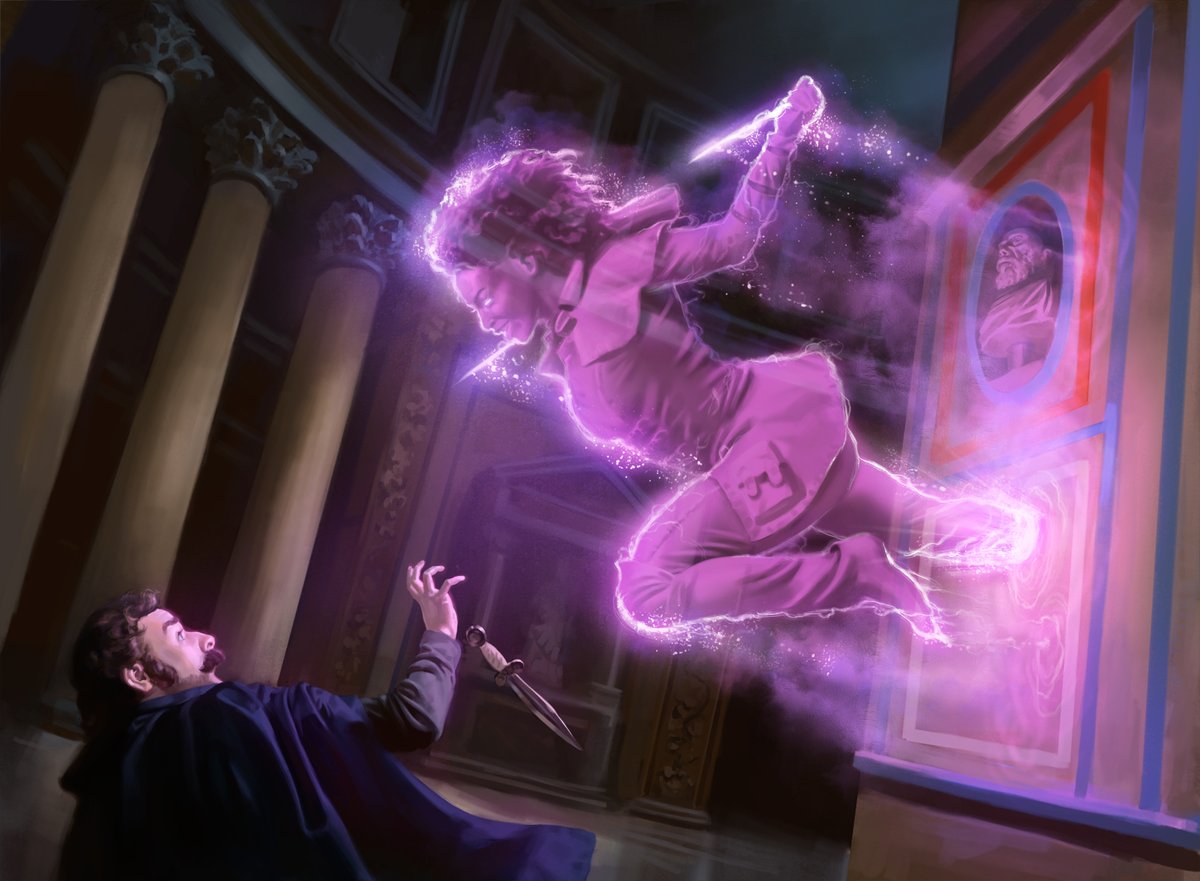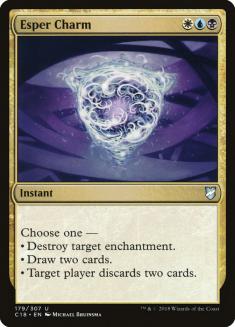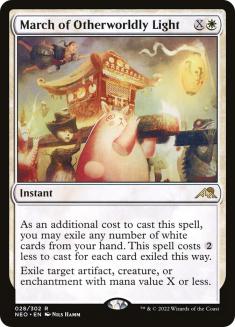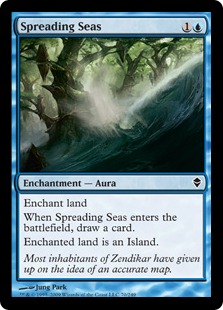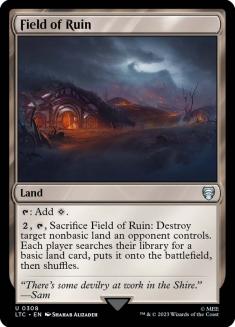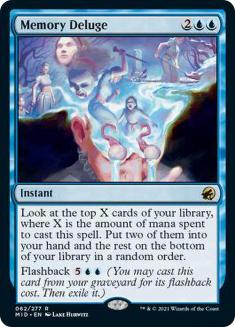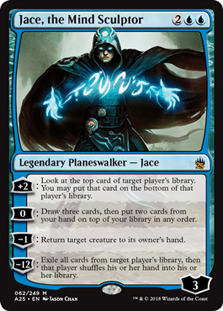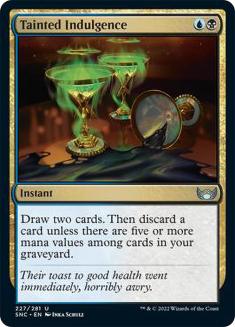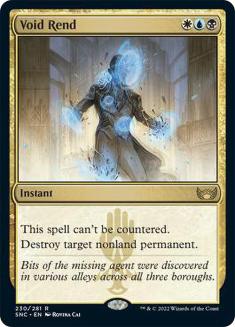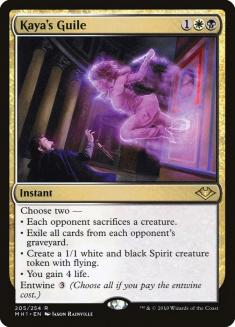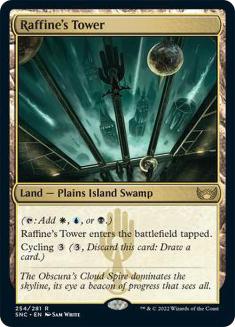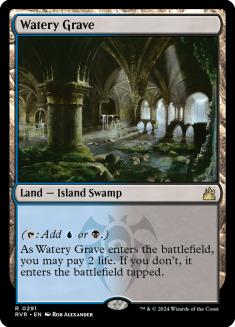Modern has been the format of choice for most competitive players since the fall of Standard. The newer formats see play, like Pioneer and the MTG Arena-exclusive options, but there is something special about fetchland-legal formats.
Most of my playing time has been dedicated to Modern, where the most powerful control spells are housed and the mana to bring them into reality. I enjoy the mana base puzzle that three-color control decks bring to Standard and Pioneer, which is why I am heavily rooting for the former to return to competitive play sooner rather than later. Pioneer gets a good amount of love for its entertainment value and being the arena for the returning pro tour. Control is strong in both popular formats and many people are already card-carrying Azorius Control players. Azorius Control has been a strong option in Modern and Pioneer; however, recent additions may have tilted the scales in favor for the third color.
Each time I attempt to break away from two-color control in Modern, strong testing results prevent me from doing so. Prior to the last SCG Invitational, I got a ton of reps in with Esper Control. Kaya’s Guile, Esper Charm, and Fatal Push created a compelling argument to ditch to the two-color norm. Esper Control brought superior, low-cost removal, with a selection of modal spells to manage anything the format could muster. The need for the switch was dashed by the printing of Prismatic Ending, as control players flocked to the new removal spell for good reason. I was suspicious as first, still traumatized by the dependence on Path to Exile to answer all threats. With Prismatic Ending, most folks cut Path to Exile completely and relied on one removal spell yet again. Solitude was played to supplement it by some players, as two copies were added to most lists. For the Invitational, I ambitiously went up to three and was very happy with the results. It turns out the combination of those two cards was enough to keep control ahead of the game, as I did not drop a match of Modern in that event.
To make the transition to Esper Control even harder, March of Otherworldly Light has been added to the control arsenal. This card does not impress me as the other two discussed examples, but it does make the list of every control deck out there. Many people played three copies in Azorius Control, and I immediately went to two after testing. Armed with additional white removal spells, I recently made the Top 8 of SCG Dallas with a nearly unchanged Azorius Control list. The competitive drive in me makes it difficult to change the captain of the ship when it has been nothing but smooth sailing. One factor that has prompted this article and sparked my curiosity is my dedication to control innovation. Azorius Control is likely the best thing that can be done in Modern, but that theory must be continuously put to the test. A pile of Esper cards came out in Streets of New Capenna and it would be irresponsible of me not to explore their impact on my most-played formats.
Today we look at Modern, what Esper Control looks like, and then we will soon venture into Pioneer.
There were noticeable sacrifices that had to be made to fit black cards into the Azorius Control shell. It is a possibility that Esper Control demands a black-based control deck, with white being the light splash, but I do not think that is correct. The white spells are too good and consistent to be complementary. Esper Control should run exactly as Azorius Control does, with the power resting in the hands of broken blue spells and planeswalkers. To keep that shell intact, some of the lowest performers and elements of the mana base had to be shifted.
The first cut was Spreading Seas, which many control players already have done. I admit that it is the most underwhelming card when the opponent is not running Urza’s Saga or Urzatron lands. The upside of drawing a card was always there, making it a limited risk addition to the main deck of Azorius Control. There have been fewer and fewer sightings of Urzatron users, making the cut safe for now. If it returns, any control deck not running Spreading Seas is a huge underdog right out the gates. Although the blue disruption has improved, it is not enough power to hold off the everything that Urzatron can throw at you. The absence of Spreading Seas is not the only reason for this matchup deficit, as changes to the mana base have also contributed.
Field of Ruin is a card that should be played in every Azorius Control deck. I do not care that the deck has four copies of Archmage’s Charm. Cryptic Command was a four-of staple, while running four copies of Field of Ruin at the same time. It was out of necessity then but could easily be a future requirement of Modern control. I was always good for one copy of Field of Ruin in Azorius Control, but it is too difficult to fit into three-color shells. The mana restrictions that adding a color brings is significant; however, the payoff should be worth it. Producing all three colors by Turn 3 is necessary for Esper Control to be successful, leaving Field of Ruin on the sideline for now. Let us just hope that no one is threatening us with big mana, because I have become accustomed to not losing that matchup over the years.
The other cuts came from any dedicated card draw and one copy of March of Otherworldly Light. Many players have a thing for Memory Deluge, and I am not one of them. I played it for a long stretch, first as a two-of, then one, and then zero. With each passing testing session and successful event, I just wanted to have a second Jace, the Mind Sculptor every time. It is now clear how good that planeswalker still is and we all need to reduce the amount of disrespect it receives. If I am paying four-mana for some cards, it better have a chance to win the game on its own in Modern. Leaving Memory Deluge off the list was an easy decision, especially with what has been added in its place. As for March of Otherworldly Light, you all are aware of where I stand on that removal spell. It is still incredibly good, which is why it has a slot in a Modern control deck. Unfortunately, it pales in comparison to the four-of kings, Solitude and Prismatic Ending.
The additions that have transformed this deck to Esper Control have already seen some play in Modern. Tainted Indulgence has stolen the spotlight from the new set and that has not surprised me. It was number three from my Top Control Cards From Streets of New Capenna article, right after Void Rend and Raffine’s Tower. I admitted that Tainted Indulgence will have more impact in Modern than Void Rend will, but the latter will be the key to control’s success in the off-chance that competitive Standard returns soon. Tainted Indulgence is the real deal, drawing two cards at instant-speed with very little drawback and a cheap cost. Control is all about the two-mana spells in this Chalice of the Void metagame, so this addition has been huge for the viability of Esper Control. For only two-mana, this spell provides a powerful alternative if Counterspell is not needed or unavailable. In traditional Azorius Control, there was no advantage gained when the opponent was unremarkable on their Turn 2. One of the historic strengths of control is its ability to present disruption, then capitalize when the opponent failed to threaten. Tainted Indulgence does all this and only has a drawback in the early-game. That drawback is to discard a card, but it eventually just draws two for two-mana, making it a dynamic control card.
The other addition to the main deck from black is a copy of Void Rend. This is a removal spell that will always make a list, disruption that cannot be countered at instant-speed. I played a couple copies of Detention Sphere for the longest time, to have a way to manage any problematic card that resolves onto the battlefield. Prismatic Ending and March of Otherworldly Light semi-solved that problem, but both are limited by mana value. The first can only hit mana value of three or less and the second requires a heavy dose of resources to do its thing. Void Rend is a clean spell that costs three and handles anything, a reasonable price even for Legacy. I would not play more than one or two of these, since they compete at a slot where the best spells are. It will be a stellar one-of for now and shares the stage with another three-cost addition in the sideboard.
Cards from the new set are exciting and fresh, but it is the old-faithful of Esper Control that brings me the most joy. Kaya’s Guile has won the competition between the modal options, as it has an extensive range to manage many Modern matchups on its own. The life gain, generic sacrifice effect, and the graveyard removal become useful against an array of decks in the format. There is not a card that I board in as frequently as this one and it would have a main deck slot if Four-Color Control were not so popular. In that matchup, it is quite lackluster, but shines in others. Kaya’s Guile has an added mode to create a Spirit token, another effect that is near and dear to my heart. The biggest perk is its ability to gain life, providing sideboard hate for Mono-Red Aggro without doing so in a dedicated way. I was always guilty of housing far too many Kor Firewalkers or Timely Reinforcements. That was a problem of the past, as Kaya’s Guile allows the user to beat up on red in guilt-free fashion.
The transition from Azorius to Esper Control has been stunted by two-color power and consistency for years, but that has not been the primary concern for many. The mana base is the true restriction for adding additional colors, opening up more chances for getting damaged in the face of aggro, or locked out by a timely Blood Moon. These threats are real in Modern and continue to be a looming area of concern for those that venture out of the two-color world of safety. With the addition of Raffine’s Tower, the fear of damage has drastically fallen. Fetching up one of these trilands makes the mana woes disappear and is not something Esper Control has ever been able to do until now. Back in my day, two shocklands had to arrive in a row to cast the color restrictive disruption from all three colors. Now, a simple fetchland allows the remaining lands to be primarily blue-producing. This new mana base makes the splash too easy and now the only area of concern is the comparison in power level. Is Esper Control more powerful than its Azorius Control counterpart? Only time will answer that question, but I can assure you that Esper Control is more fun. This version of Esper Control has a strong card-draw package that Azorius Control never had. I was so desperate for two-mana draw spells that I was obsessed with making Frantic Inventory work. I am glad that it has been able to successfully operate without it, but now it is time to test out some alternatives.

